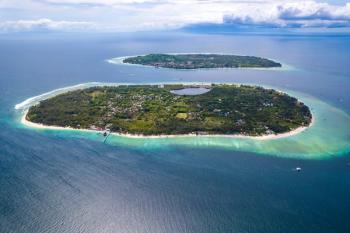
- Application Notebook-02-01-2010
- Volume 0
- Issue 0
Optimized Grazing Angle Ge-ATR of Monolayers and Thin Films on Si
Grazing angle Ge ATR spectroscopy is extremely sensitive to monolayers and thin films on high refractive index substrates such as Si.
Susan Berets and Jeffrey Christenson, Harrick Scientific Products, Inc.
Monolayers and other thin coatings on Si and other high refractive index substrates are of key importance in materials science, bioscience, synthetic organic, and semiconductor research. These films are often close to the FTIR detection limit so methods that improve sensitivity are vital. Traditionally, these samples were examined by transmission or grazing angle specular reflectance spectroscopy. Grazing angle Ge-ATR has recently gained wider use because of its higher sensitivity. Grazing angle Ge-ATR measurements have typically been recorded at 65°, an angle sufficiently above the critical angle for the Si-Ge interface, 58.7°.
This note explores the increased sensitivity gained by optimizing the incident angle and also discusses the potential spectral anomalies if the nominal critical angle of a given sample is exceeded.
Experimental
The grazing angle Ge-ATR measurements were carried out in a commercial FTIR spectrometer, using Harrick's VariGATR™ accessory at selected incident angles from 60° to 65° (see Figure 1). Spectra were collected at an 8 cm-1 resolution and signal averaged over 32 scans. The samples investigated were thin films on Si substrates. Each sample was pressed against the ATR crystal using the same force using the VariGATR's built-in pressure applicator and force sensor.
Figure 1
Results and Discussion
Figures 2a and 2b show spectra recorded from two different samples at several incident angles. Both spectra have higher band intensities at the lowest angle measured. However, the spectrum of sample B shows significant dispersion effects at 60° which may complicate interpretation. These include a sloping baseline and a visible step between the high and low wavenumber edges of the bands. These effects are not apparent in the spectrum of sample A.
Figure 2
Conclusion
In conclusion, it is clear that selecting the incident angle to approach the critical angle does increase sensitivity. However, for ease of interpretation, the incident angle should be optimized for greatest sensitivity without significant dispersion effects.
Harrick Scientific Products, Inc.
141 Tompkins Ave., 2nd floor, Pleasantville NY 10570
tel. (914)747-7202; fax (914)747-7409
Website:
Articles in this issue
over 15 years ago
Call for Application Notesalmost 16 years ago
A Confocal Raman Imaging Study on Emulsionsalmost 16 years ago
Trace Element Analysis of Heavy Metals in Pharmaceutical Materialsalmost 16 years ago
Applications of 1064 nm Dispersive Raman Systems in Biofuel Researchalmost 16 years ago
Petrochemical Product and Process Control Using Rapid TD-NMR Technologyalmost 16 years ago
Matching Filters to Fluorophores for In Vitro Diagnosticsalmost 16 years ago
From the Publisher: Making a Splash at Pittcon 2010Newsletter
Get essential updates on the latest spectroscopy technologies, regulatory standards, and best practices—subscribe today to Spectroscopy.


